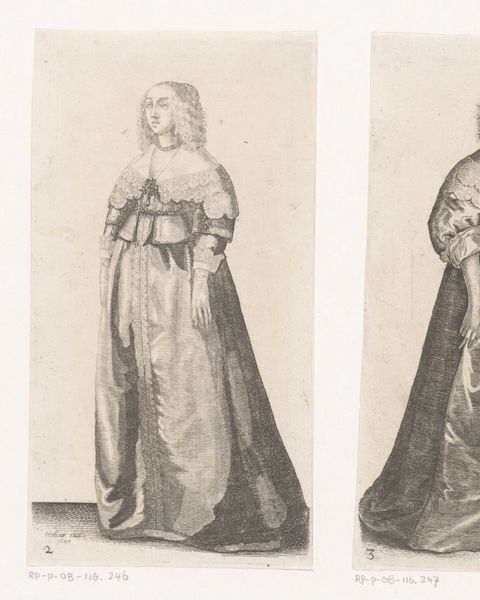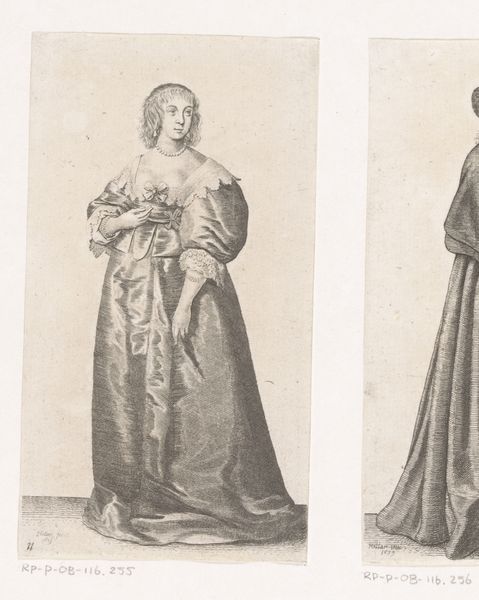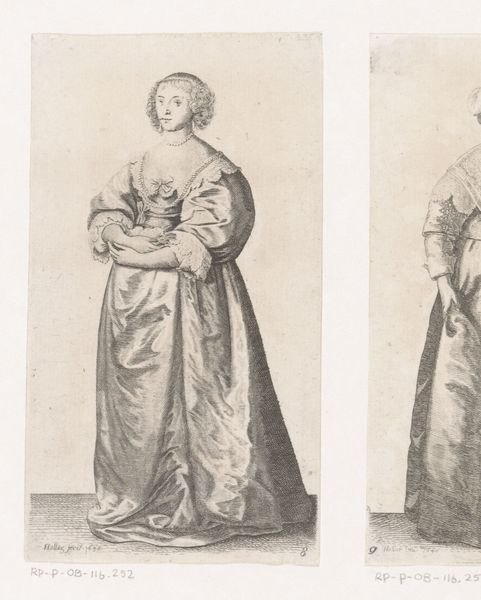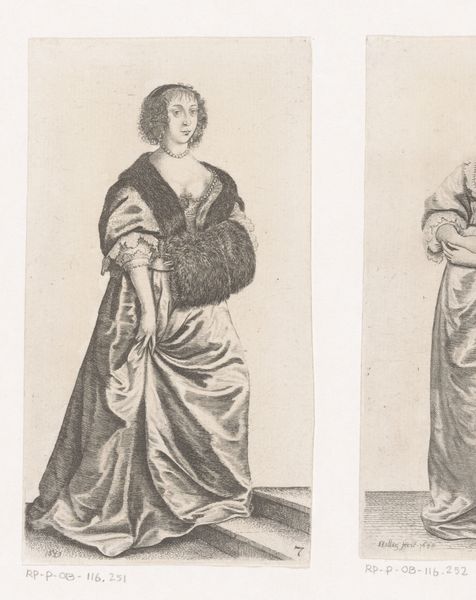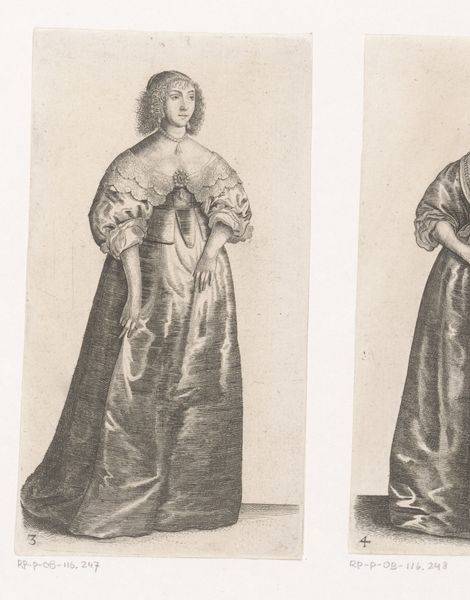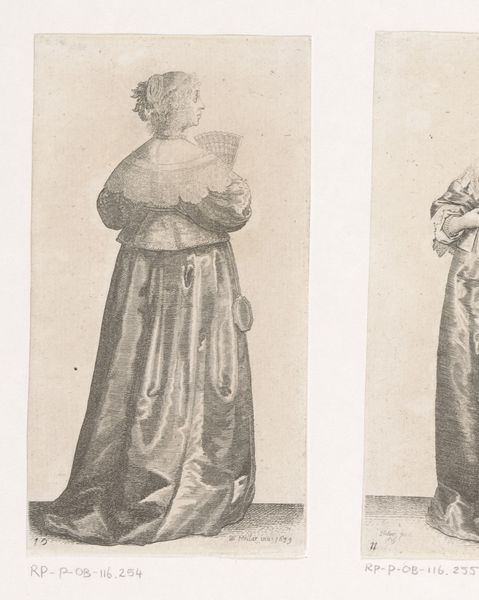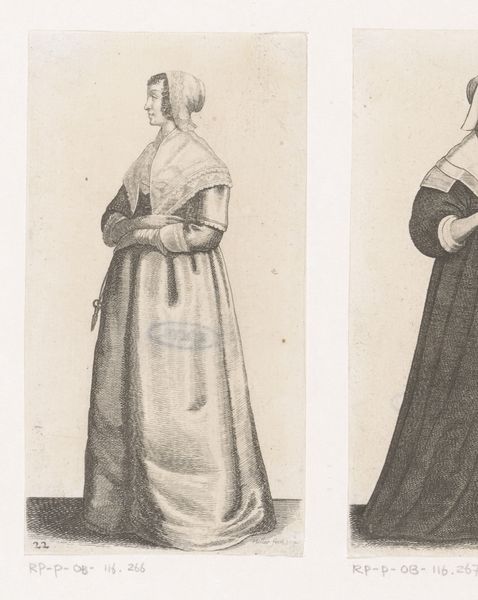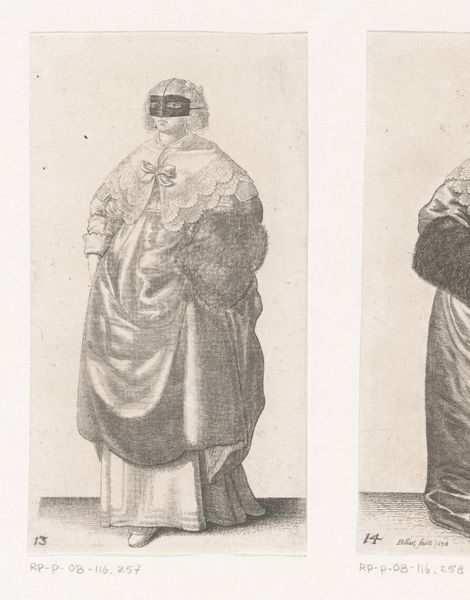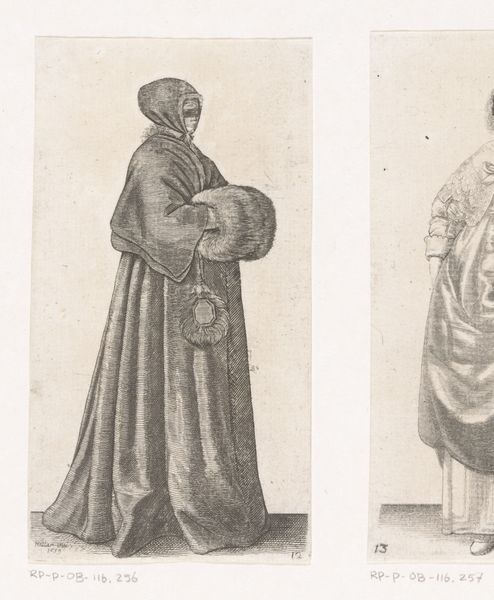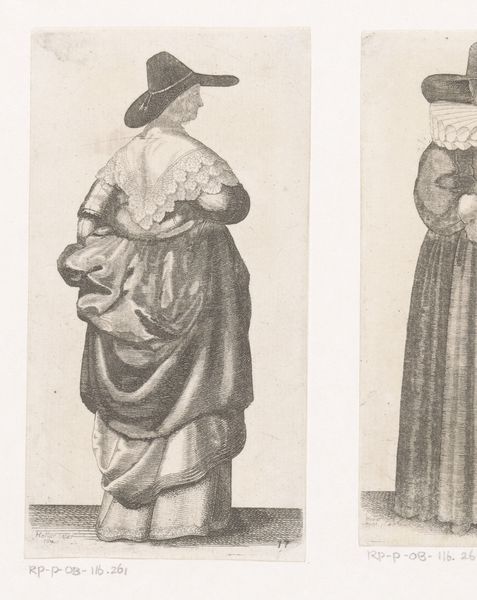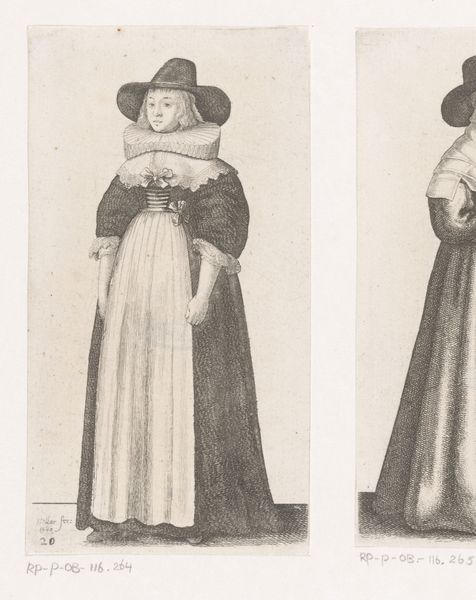
Engelse vrouw van stand met veren stokwaaier Possibly 1638 - 1707
0:00
0:00
wenceslaushollar
Rijksmuseum
print, engraving
#
portrait
# print
#
old engraving style
#
figuration
#
history-painting
#
dress
#
engraving
Dimensions: height 131 mm, width 72 mm
Copyright: Rijks Museum: Open Domain
Editor: Here we have Wenceslaus Hollar's "Engelse vrouw van stand met veren stokwaaier," dating perhaps from 1638 to 1707. It's an engraving. The woman’s pose is so rigid, so formal. What strikes you most about this print? Curator: Immediately, I am drawn to the interplay of textures and lines. Hollar masterfully uses the engraving technique to create contrasting surfaces – the smooth, almost reflective quality of the woman's dress versus the intricate detail of her lace collar and the feathered fan she holds. It is through these textural differentiations, achieved via meticulous line work, that Hollar articulates a sense of volume and material reality within a two-dimensional plane. Editor: That’s fascinating. I hadn’t considered the lines in that way, but it makes sense that the clothing is meant to communicate that sense of touch and status. Does the stark black and white medium affect your interpretation at all? Curator: The monochrome palette is central to the work’s effect. The absence of colour encourages us to focus solely on form and line. Note how Hollar uses hatching and cross-hatching to modulate the tonal range, creating depth and shadow where there would otherwise be none. The restrictions imposed by the printmaking process seem to enhance, rather than diminish, Hollar's descriptive powers. The medium itself is part of the message. Editor: That makes so much sense. I had been so focused on the woman as a subject, I missed how integral the printmaking technique was to understanding the piece itself. Curator: Precisely. We can learn so much by attending to how the artist uses the formal elements to structure our perception.
Comments
No comments
Be the first to comment and join the conversation on the ultimate creative platform.
